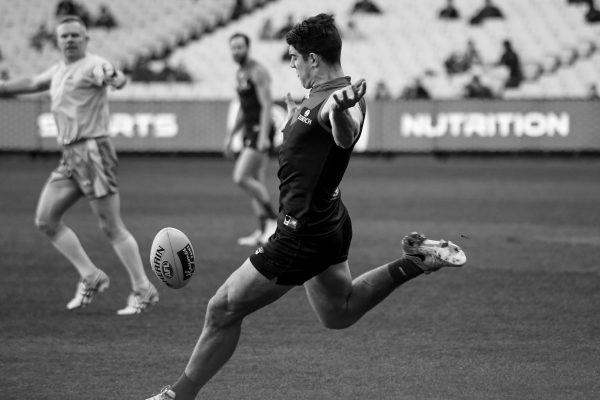Soccer is played in Australia and has been done so for a long time. It was introduced in the country in 1884 and had over 90 clubs in the National Premier League, 52 in the Australian Soccer League, and many other state leagues. There are also numerous other teams, including the Western Sydney Wanderers. Here are some facts you might not have known. Read on to learn more about the country’s soccer culture. And if you want to know more about football history in Australia, here is some information that may interest you.
Football in Australia has been played since 1884
In 1884, a meeting in Melbourne led to the founding of the Anglo-Australian Football Club, which played under the rules of the British Football Association. In 2009, Football Federation Victoria celebrated the 125th anniversary of the sport in the state. It is worth noting that Football in Australia has a history of class division. Pioneering players, referees, and administrators include Arthur E. Gibbs, who represented Australia on the Football Association Council for many years.
The first Australian Rules games were played in 1858 between Melbourne Grammar and Scotch College students. In the following year, regular games in Melbourne’s parks were introduced. By the 1870s, games were attended by tens of thousands of spectators at the Melbourne Cricket Ground.
The rules of Australian Rules Football were adapted from rugby union. Although teams from the northern colony initially dominated the sport, it soon spread to other parts of Australia. In 1884, the game’s popularity began to grow. The sport was introduced to Tasmania and South Australia and remains popular today. After the Federation, the sport started to gain national recognition. The Australian Football Association (ANFC) was formed, and the first representative competitions took place.
Australian Rules Football has several distinctive features. One of these is the unique goalposts. The game’s goalposts consist of two large goalposts flanked by two more petite “behind” posts. Goal umpires also use a center bounce to start and restart the game after a goal. Goal umpires have been present in Australian Rules football since 1874.

In the late 1850s, the game of Football was introduced to the Colony of Victoria. During this time, the rules of Australian Rules were created. The game eventually spread to the Colony of Queensland. It soon became the most popular code of Football in Australia.
There are 90 clubs in the National Premier League.
The National Premier League is an Australian soccer league in which teams compete for promotion or relegation. Each season, the top tier consists of 89 clubs. The NPL is divided into eight divisions, one in each state. The top level is the National Premier League, while the lower divisions are called state leagues.
The NPL is run by the Football Australia member federations, with each league’s premier advancing to the NPL Finals Series. The Men’s NPL is separate from the Women’s NPL and will not be merged with the Women’s competition. The NPL represents a significant step towards achieving Football Australia’s strategic goals and will connect elite player development to the football community at a more local level.
Football Australia runs the A-League, and the A-League will continue to exist. The NPL has been a popular game in Australia for the past decade. The NPL is the top-tier competition in Australia and the country’s most prominent sports league. It has a population of more than 1.8 million people, making it one of the most significant leagues in the world.
The NPL’s history can be traced to the early 1900s. Australia had soccer clubs based on migrant-ethnic communities, with many of the most popular teams coming from Greek, Macedonian, Italian, Croatian, and Italian communities. In the twentieth century, the national league began to be recognized as one of the most popular sports in the country.

British immigrants introduced soccer to Australia in the late 19th century, with the first club, the Wanderers. In 1977, the National Soccer League was introduced, followed by the A-League in 2004. This league was responsible for a rise in the popularity of the game. The National Soccer Federation has a separate women’s club, and the national women’s team is called the Matildas.
There are 52 teams in the Australian Soccer League.
The Australian Soccer League is one of Australia’s premier professional soccer leagues. The NSL is played across the country and features 52 teams. The NSL was the national soccer competition in Australia from 1977 to 2004. In that time, South Melbourne played 791 games while Canterbury Marrickville played 22 games. The league had no finals series in its first season, so teams were determined by the highest place on the ladder. Since then, the finals system has been the defining factor for national champions.
The Australian Soccer League has changed ownership and management in the recent past. Since 2004, the APL has been run by Football Federation Australia. But, in the summer of 2018, a conflict emerged between the Football Federation Australia and the clubs over the league’s ownership structure. As a result, a FIFA-backed congress review working group produced a report in August 2018 recommending an independent A-League and an expanded domestic congress.
The A-League has a long history in Australia. The inaugural A-League season saw the Adelaide United team win the title. The couple had an impressive record in the league, with an average of 40.1 points per game. In addition, the team was the first to reach the Grand Final and to win the A-League Championship. In 2022, Western United won its first A-League Championship.
The A-League is the most popular professional soccer league in Australia. It features the best teams in Australia. The company is home to the A-League’s Premier Division.

There are several state leagues in Australia.
There are several state-league competitions in Australia, ranging from junior to senior. The majority of the competitors were formed in the 19th century. Each state has its senior premierships. State-by-state premiership records are listed below.
The Australian soccer league system consists of the top division, controlled by Football Australia, and several state-league competitions below. From 1977 until 2004, the top-tier competition was the National Soccer League, which was replaced by the Australian Soccer League in 2005. In 2013, the National Premier Leagues were introduced to the Australian soccer system, incorporating existing state leagues as divisions and a national end-of-season final.
The South Australia State League is an annual competition played by clubs in South Australia. The teams in the competition have an average goals-per-game record. The South Australian State League is the third division in the domestic pyramid. There are currently 139 fixtures scheduled in the State League. Of those, 139 have been played. Those matches have produced a total of 0 goals.
There are several regional soccer competitions in Australia.
Regional soccer competitions in Australia have a rich history. Some are more popular than others, but both share similar characteristics. They are all designed to develop young players and compete against other Australian clubs. While these regional competitions may seem small, they are essential for developing the Australian game.
The Australian Football League is the country’s most popular regional soccer competition. It is organized by member clubs and has attracted as many as 58 teams around Australia. The competition is divided into five divisions: Men’s Division I for NPL and State League clubs; Men’s Division II for lower State League and amateur clubs; Women’s Division for amateur clubs; and Master’s and Veterans Divisions for players aged 35 and over.
The Australian soccer team has a loyal fan base but hasn’t always been as popular as Australian rugby or Australian Rules football. The sport has been part of Australian culture for many years and has spawned Australian legends. Australian soccer began with the founding of the Wanderers club in 1880 as the brainchild of a school teacher, John Walter Fletcher.






